Increase Your Online Conversion Rates with these Top FOMO Ideas.
Increase Your Online Conversion Rates with these Top FOMO Ideas. 15 minutes read

Increase Your Online Conversion Rates with these Top FOMO Ideas.
The word FOMO (or, “Fear of Missing Out”) describes the anxiety we feel when we are excluded from a social event or a new experience. FOMO marketing uses this feeling to persuade us to buy particular products, helping businesses to increase their conversion rate and reduce their abandoned baskets. This article shows you some practical ways to add FOMO to your marketing mix.
Some things are in such high demand that their price becomes irrelevant. For example, popular concert tickets often sell out in moments. In the same way, consumers will sometimes camp outside stores to be the first to buy the latest smartphone. In both cases, highly-skilled FOMO marketing is responsible for a huge increase in consumer demand. But what is it, and how does it work?
Psychologists have become more aware of FOMO due to the influence of social media on modern lifestyles. A research study found that three quarters of Facebook users check their account daily, and one of the most important drivers of Social Media engagement is the anxiety associated with missing out. But, whilst FOMO can sometimes have a negative impact, it can also inspire people to try new things and explore new opportunities.
FOMO marketing uses this positive side of FOMO to increase demand and sell the latest trends. By highlighting the popularity of a product and limiting its availability, marketers can make it irresistible. Alongside this, they can shorten the duration of an average customer journey, reducing their overall CPA.
FOMO Marketing combines three powerful psychological effects: Social Proof, Urgency and Scarcity. A number of high-profile studies have demonstrated how our decisions are shaped by those around us. For example, in their “Room With a Viewpoint” study, the behavioural scientists Goldstein, Cialdini and Griskevicius showed that social norms can have a greater impact on our behaviour than rational appeals. Similar research has highlighted an effect known as “mere urgency“, which describes how our priorities change more significantly when a task has a short deadline than they do when it is particularly important. The Mere Urgency Effect helps to explain why people are more productive when they break a single large task into many (more urgent) smaller tasks.
The influence that scarcity has on an item’s value was illustrated in another well-known experiment conducted in 1975. During the experiment, the psychologists Adewole, Lee and Worschel asked participants to rate the desirability of a cookie from one of two jars (one that was full and another that was nearly-empty). The sample of 200 undergraduate students rated those from the nearly-empty jar as far more appealing than the full one.
FOMO marketing uses Scarcity to increase demand for a product and combines this effect with our instinct for conforming and our tendency to prioritise imminent deadlines. Because it applies these psychological effects together, FOMO is a remarkably powerful marketing tool.

An obvious example of FOMO marketing in action is the Glastonbury music festival. If you want tickets for Glastonbury, money is not enough; you have to work for them. Over 300,000 people apply for tickets each year, and roughly half of these manage to buy them. The application process is stressful, expensive, and it takes place before the line-up is even announced. But, because it is a unique event and the supply of tickets is limited, the festival breaks ticket sales records almost every year.
High-end whiskey brands like Pappy Van Winkel are careful to limit the supply of their products. Whilst Jim Beam produces 7-8,000,000 cases of whiskey a year (with 12 bottles to the case), Pappy Van Winkel produces closer to 8000 (giving a Jim Beam-to-Pappy ratio of 1000:1). Because of this strategy, a bottle of Pappy Van Winkel is worth thousands of dollars.
The impact of FOMO marketing is so consistent that online businesses now incorporate it into almost every aspect of their marketing strategy. For example, booking websites often add “low stock” notifications to their offer pages. These notifications show that the flight or hotel room is nearly sold out (or that there are “only … left”), encouraging visitors to make a decision immediately. In this case, it is not just the increase in conversions that matters, but also the fact that guests book months earlier than they otherwise might.
Here are 15 concrete methods for adding FOMO to your marketing strategy. In each case, you can enhance the effect by targeting your marketing content to a more specific audience. Analyzing your customers and understanding their shared characteristics will help you to identify the most significant problems you can solve for them.
Another important element of any FOMO marketing strategy is to highlight previous opportunities that they have missed. Showing real offers and options that your visitors have missed out on will increase their motivation to act on new opportunities.
Highlighting the limited supply of a product or offer encourages customers to take action immediately. Not only does it imply that the product is popular, but the scarcity itself makes the package feel more valuable. Even without setting a deadline for your customers, the knowledge that they could miss out is enough to create Urgency.
The travel and comparisons site Booking.com displays scarcity messages throughout its catalogue and offer pages. Because it is so important for customers to book trips early, FOMO is an essential tool for travel industry websites.
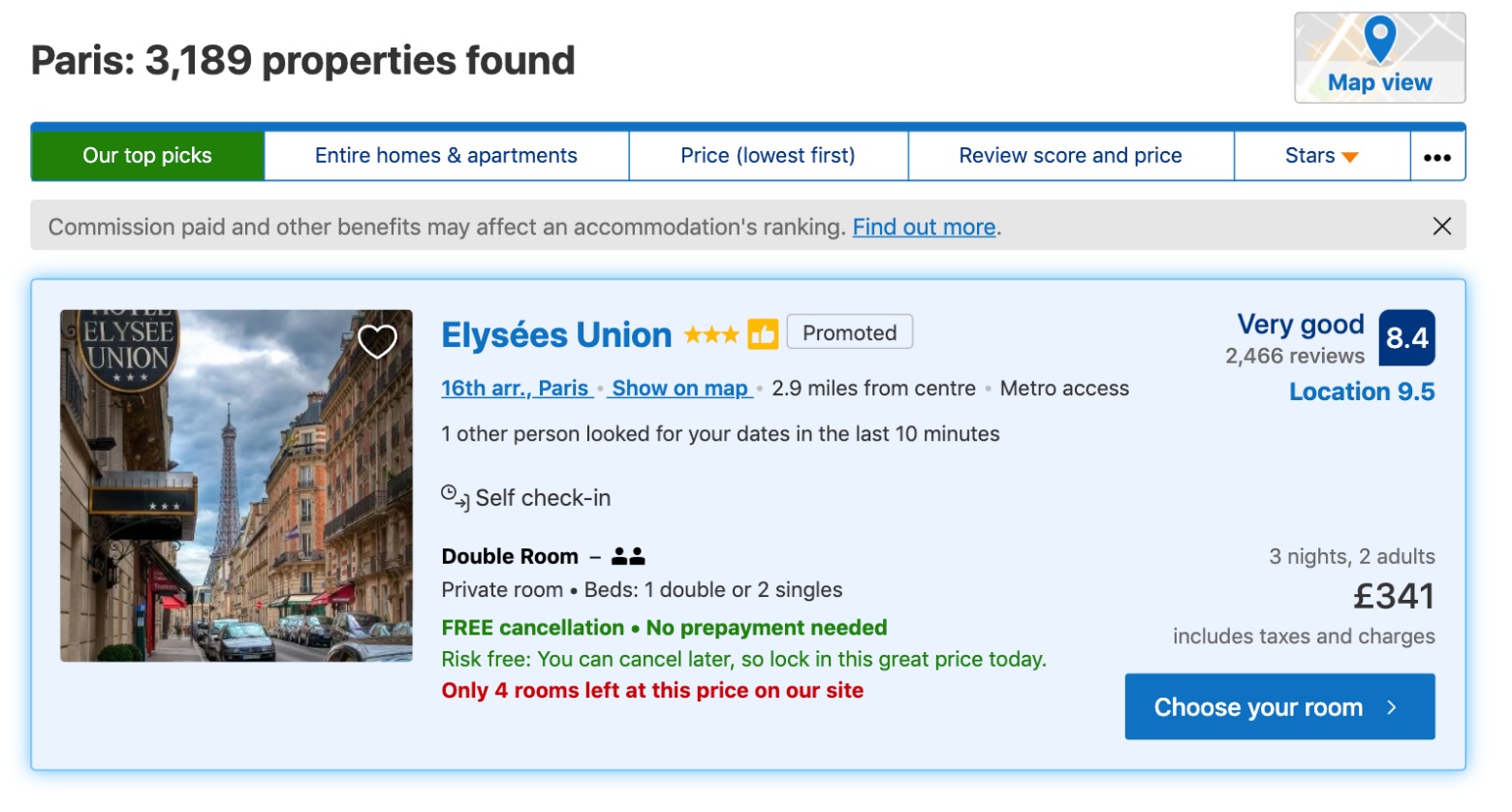
One way to add stock levels to your Shopify or WooCommerce product pages is to install a plugin that connects to your product catalogue. These apps will display a label when one of your products is low in stock. For Shopify, two of the most popular options are:
Alternatively, you can use a FOMO and Social Proof app like Websitestoolz, with which you can create unlimited popup notificatons.
Building a mailing list of highly engaged subscribers is an important part of any marketing strategy. Email marketing gets exceptionally high returns, with some studies suggesting you could earn $38 for ever $1 you spend. However, there are a number of other advantages to having a healthy mailing list. For example, it allows you to segment and analyze your customers more effectively.
Generating sign-ups has become more difficult as regulations have tightened and browsers have become more sensitive to spam. The best way to build your email list is to provide genuinely useful content to your subscribers. By producing and advertising exclusive content, such as advanced information about your best deals, you can create an incentive to sign up.
The limited-time sale has been a part of marketing since its earliest days. For some industries, periodic sales provide a way to get rid of excess stock, reducing storage costs and boosting revenue. However, the way consumers respond to these sales has persuaded almost every kind of business to explore seasonal promotions. This example from Miss Selfridge advertises a sale with a fixed top-bar that stands out from the site’s default colour scheme.
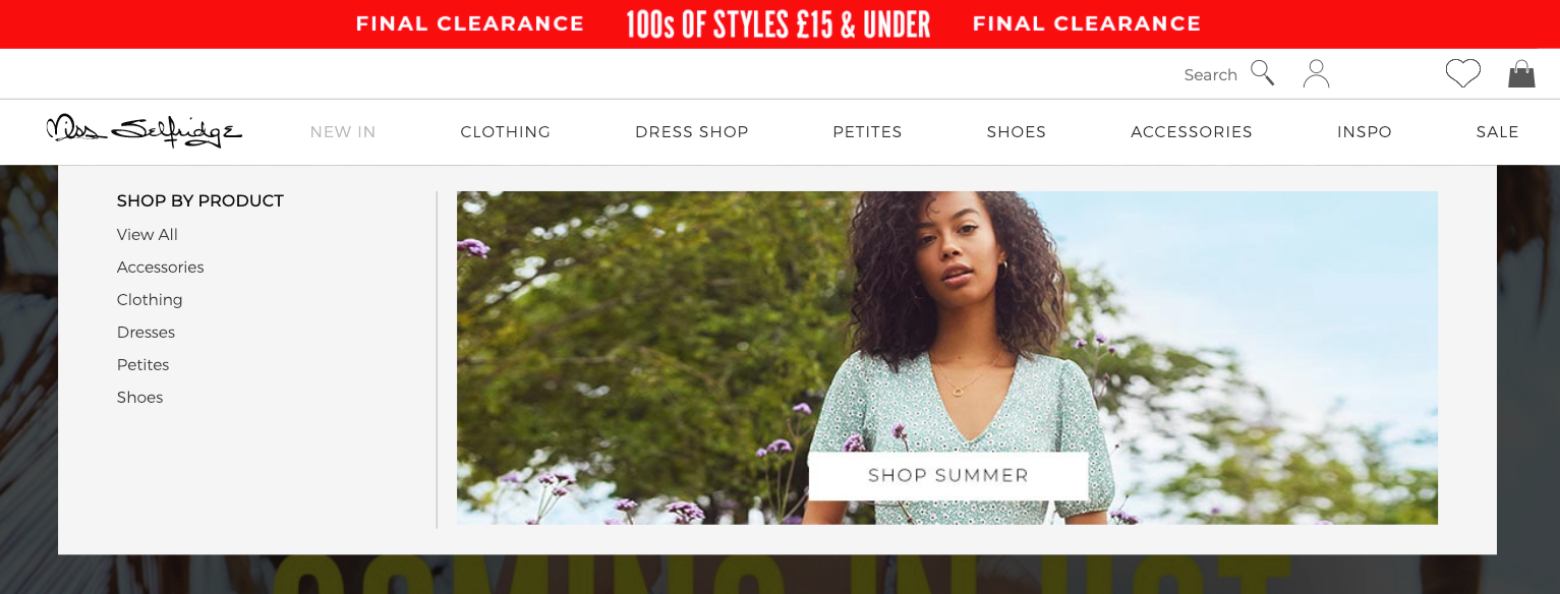
There are a number of ways to engineer time-limited offers. For example, you could create a unique bundle or simply offer discounted prices. You could even offer a bonus item to people who make a purchase during the sale period. The important thing is to offer your customers something they won’t want to miss out on.
FOMO is a powerful way to attract attention. Unfortunately, your customers’ inbox is probably full of emails that start with “Don’t miss out” or “Limited time only”, so you have to work a bit harder to bypass their built-in filter.
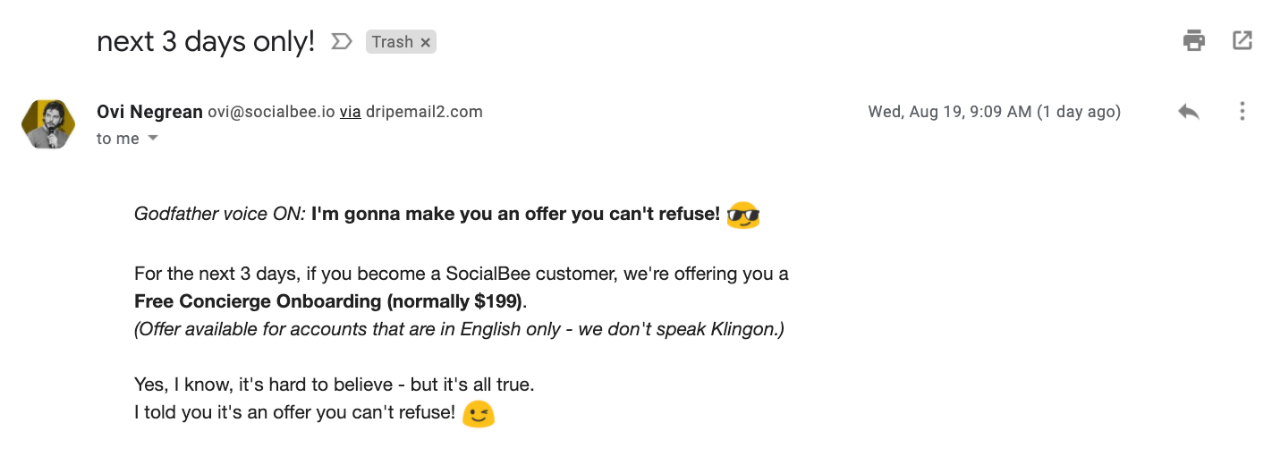
This email is part of the on-boarding sequence for the social media management tool SocialBee. Because it is part of a sequence, and the sender appears before the subject line, the classic sales formula does not sound like spam. Instead, the subject line is likely to provoke real curiosity and improve open rates.
Building your mailing list is much easier if you can offer new sign ups something in exchange for their email address. Lead magnets are an effective strategy, but most websites offer downloadable content that repeats what is written in their blog.
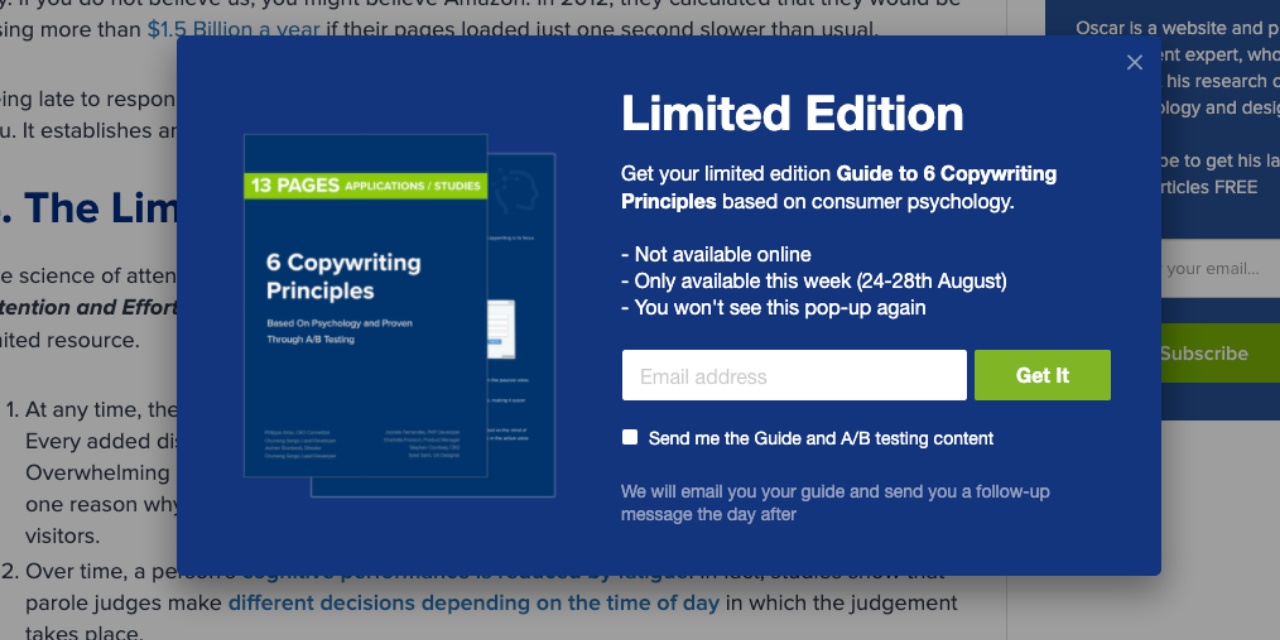
Offering a unique and exclusive resource, especially one that is only available for a limited time, gives your visitors a better reason to sign up.
FOMO plays a big part in content marketing. Enticing headlines persuade a browser that the blog article, video or training guide will tell them something new and important. Whilst the precise mechanisms behind curiosity are not well understood, experience shows that you can make your articles more appealing by proposing a list, hinting at a secret or asking a question that will be answered in the content. The effect is even more powerful if it is associated with a privileged “in-group”.
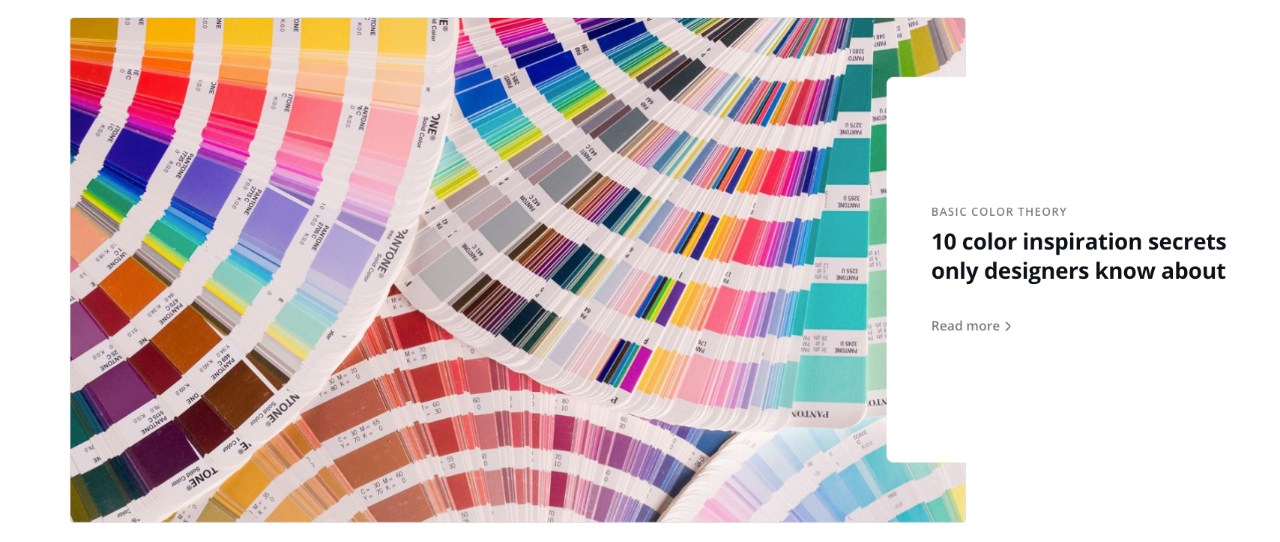
Both unanswered questions and the use of privileged groups create a powerful feeling that a browser will miss out on something if they don’t click the link. In the example above, Canva uses a number of these strategies to make the article more enticing. The blog title introduces a list, hints at a secret and creates an “in-group” that the reader relates to.
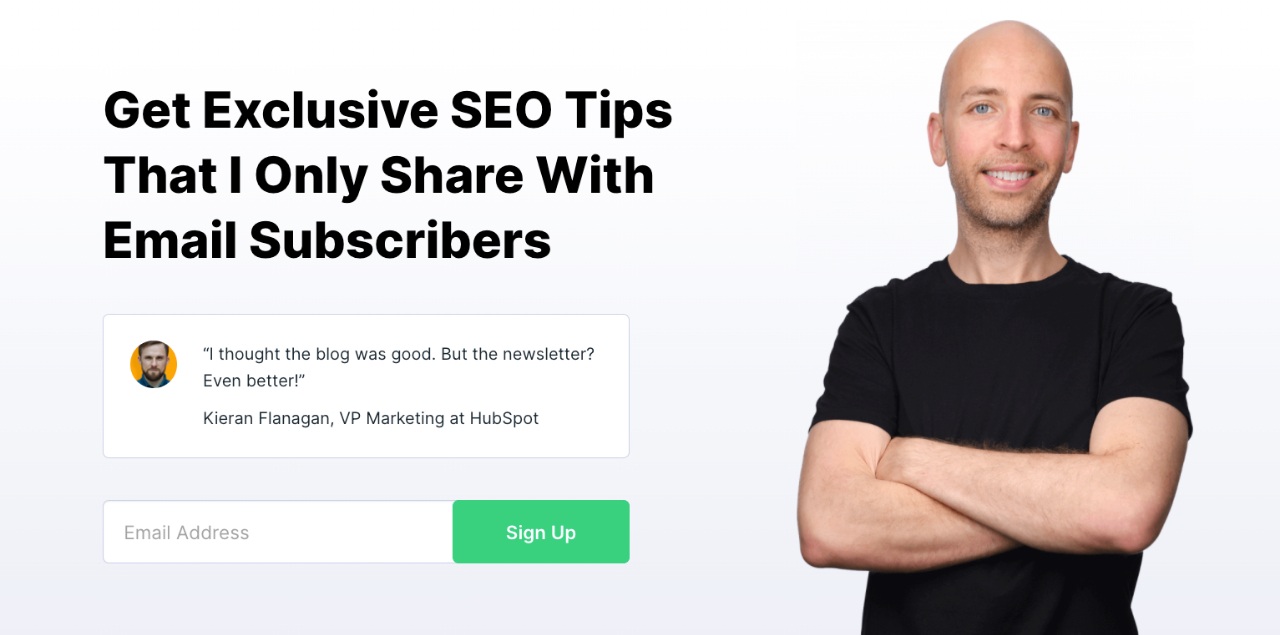
Similarly, in this example, the popular marketing and SEO blogger Brian Dean turns his mailing list into a privileged group. Combined with his own expert authority, the strategy is likely to increase his sign-ups.
Social Proof notifications show what other browsers are doing on a website. They show how many people are viewing a page (“Live Visitor Count”), how many people have visited recently, and how many people have bought a particular product (“Realtime conversion popup notifications”).
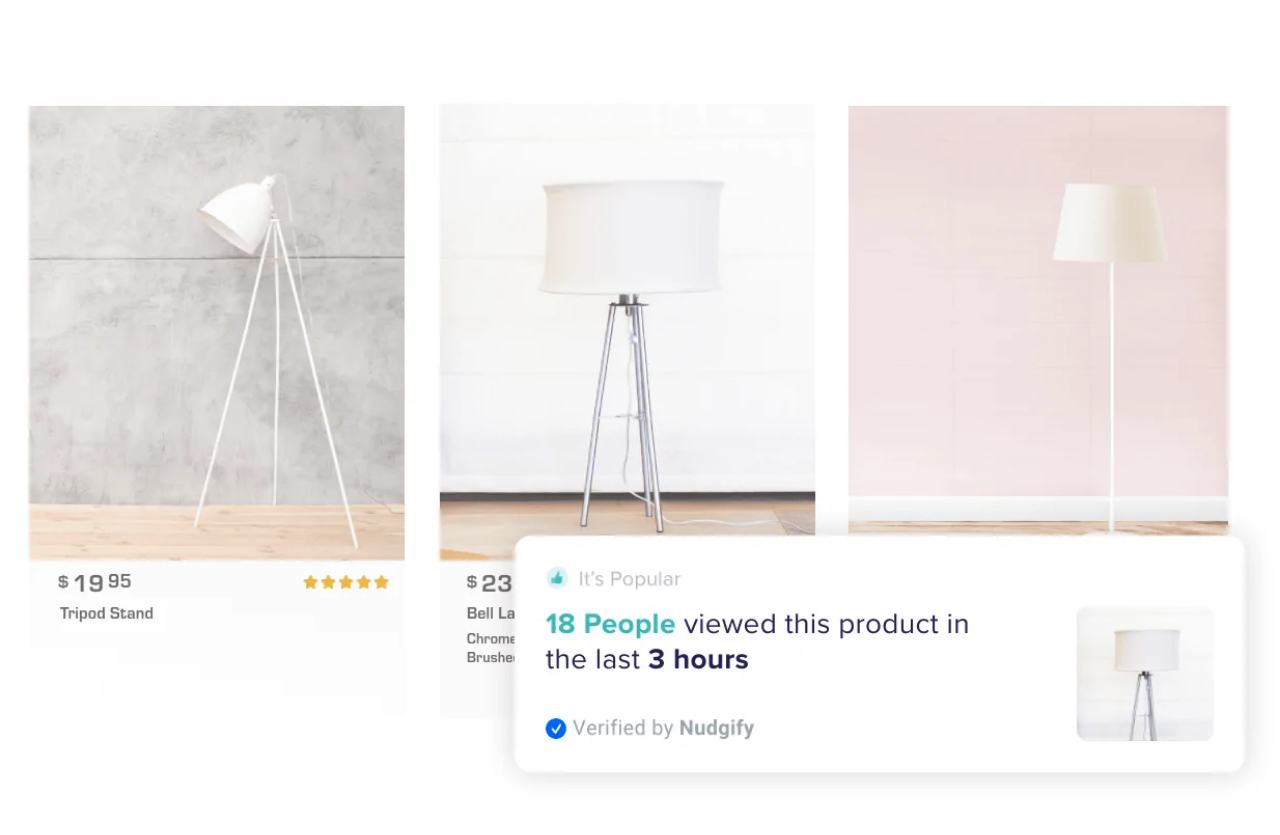
Making this kind of context visible triggers a strong sense of scarcity and competition, especially if it is combined with information showing the item is low in stock. This technique is even more effective than a time limit because visitors do not know exactly how long they have to make a purchase.
Freebies and giveaways are a common tactic in the events and entertainment industry. By limiting the number of free items to the first 100 attendees, event organizers encourage people to arrive earlier. In the same way, you can use a discounted offer with a limited number of sign-ups to encourage potential customers to make up their mind faster.
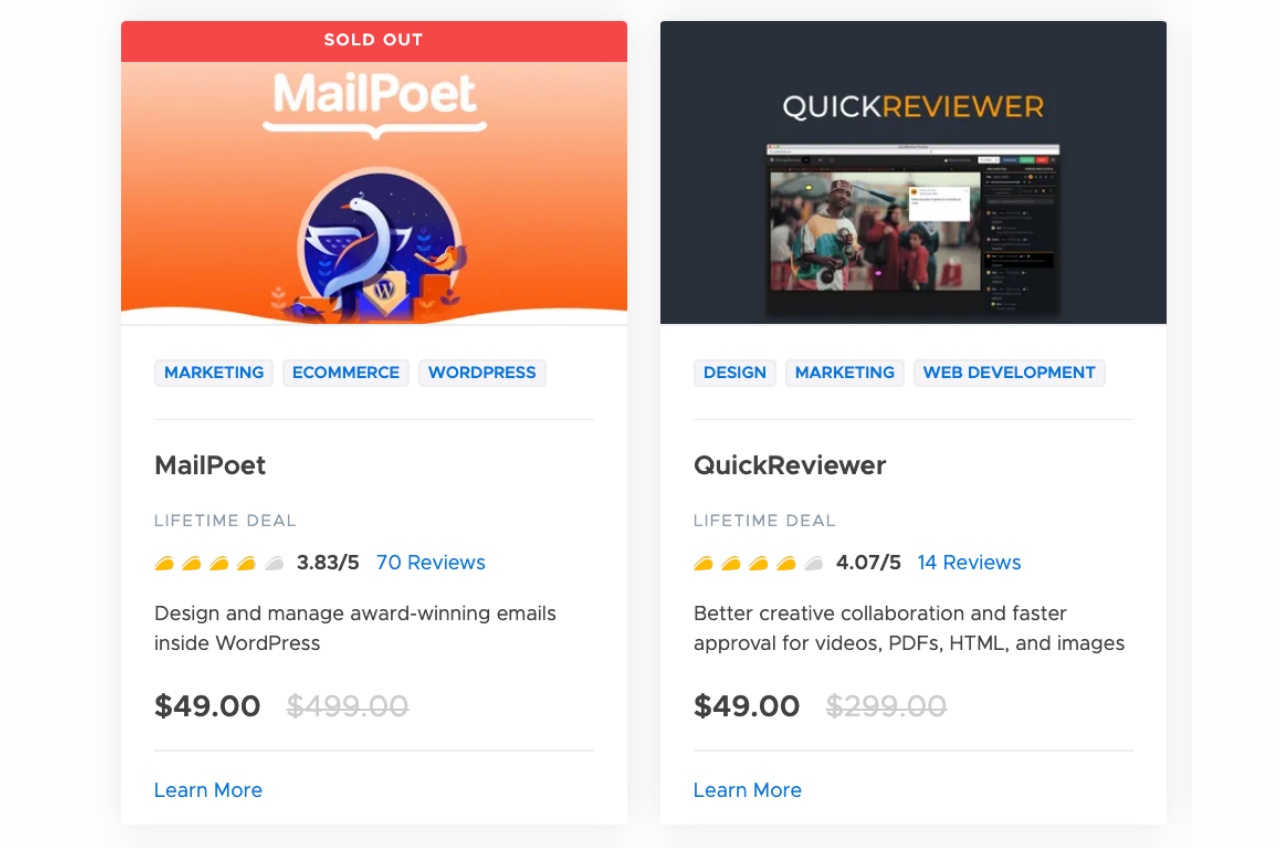
The SaaS listing website AppSumo provides exclusive deals on software packages. The impact of these offers is increased by limiting them to a certain number and showing offers that have sold out.
Displaying deals that are no longer available may feel like a waste of valuable space, but it has a significant effect on consumer behaviour.
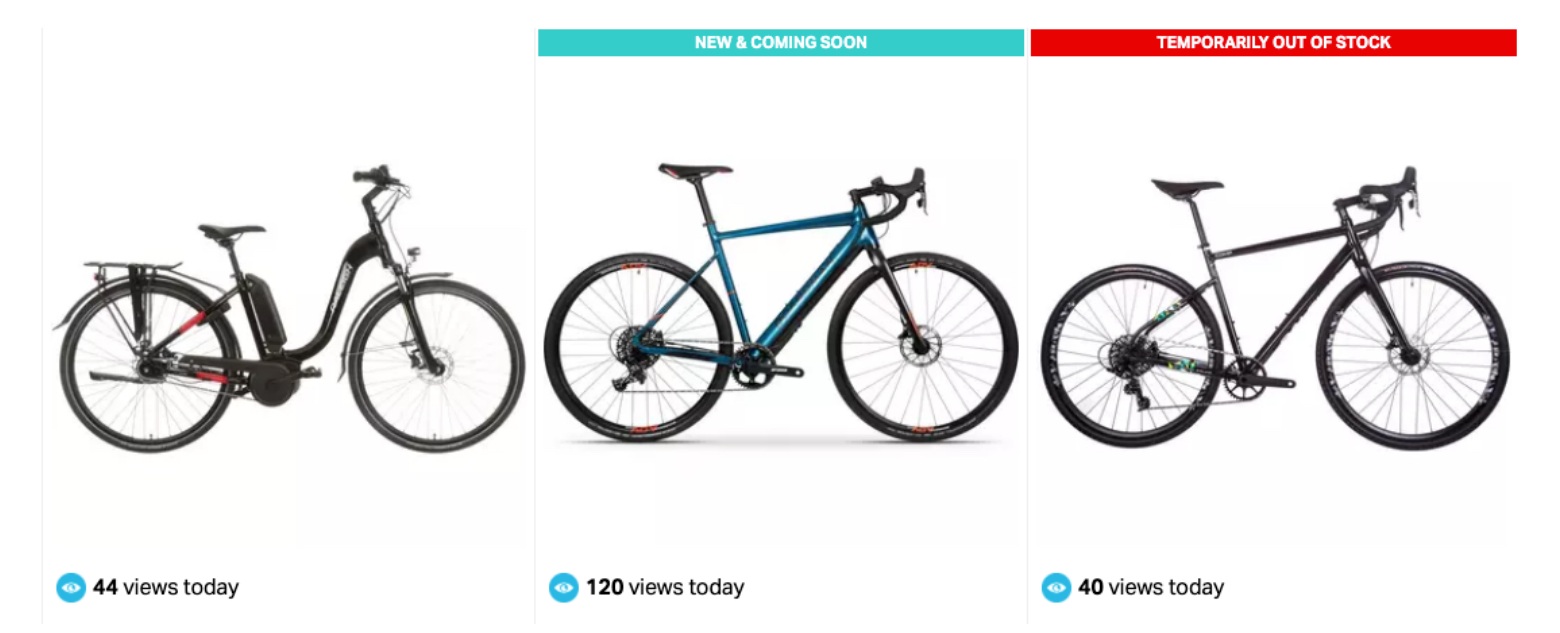
Sites like Booking.com have experimented with showing sold-out offers alongside those with limited availability to reinforce the impact of scarcity. In the above example, Halfords combines the tactic of displaying sold-out items with a simple live visitor count.
According to the CRO consultancy Invesp, 90% of consumers say that free shipping is the most important reason for shopping online more now than previously. Their research also suggests that average order values are around 30% higher when free shipping is included. You can also use free shipping to create a subtle FOMO marketing strategy.

Offering free shipping for a limited time period feels more natural than simply discounting your prices. Because a change in delivery policy can occur organically, visitors are less likely to feel like they are being manipulated. That means they don’t experience the same level of Psychological Reactance and are more likely to respond to the deal.
An Order Soon notification gives your customers a deadline for placing their order if they want to receive it on a certain day. Because it is a natural deadline, rather than one designed to pressure the sale, it is less likely to be ignored. And, by encouraging your customer to think about receiving the purchase, the notification triggers a feeling of ownership (this is called the Endowment Effect).
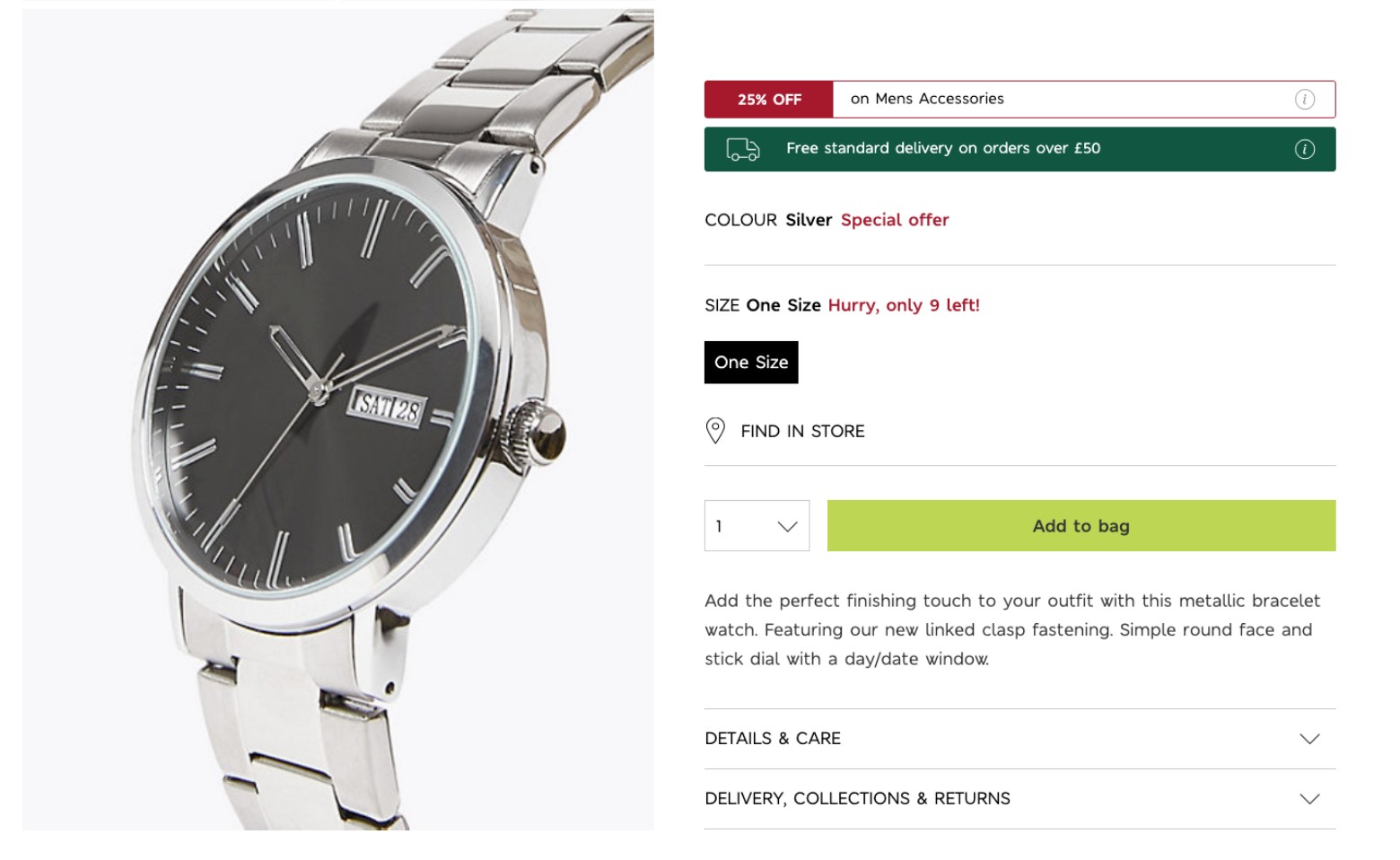
In this example, Marks and Spencer have positioned the Order Soon message directly below the main button. By matching the colour of the CTA button, the Order Soon message makes it clear what a customer needs to do.
One of the main obstacles faced by eCommerce and retail websites is procrastination. Visitors often delay making a purchase because it makes them feel anxious or uncomfortable. You can overcome this problem by installing an exit intent pop-up on your pricing page or checkout, advertising a deal that is only available then and there.
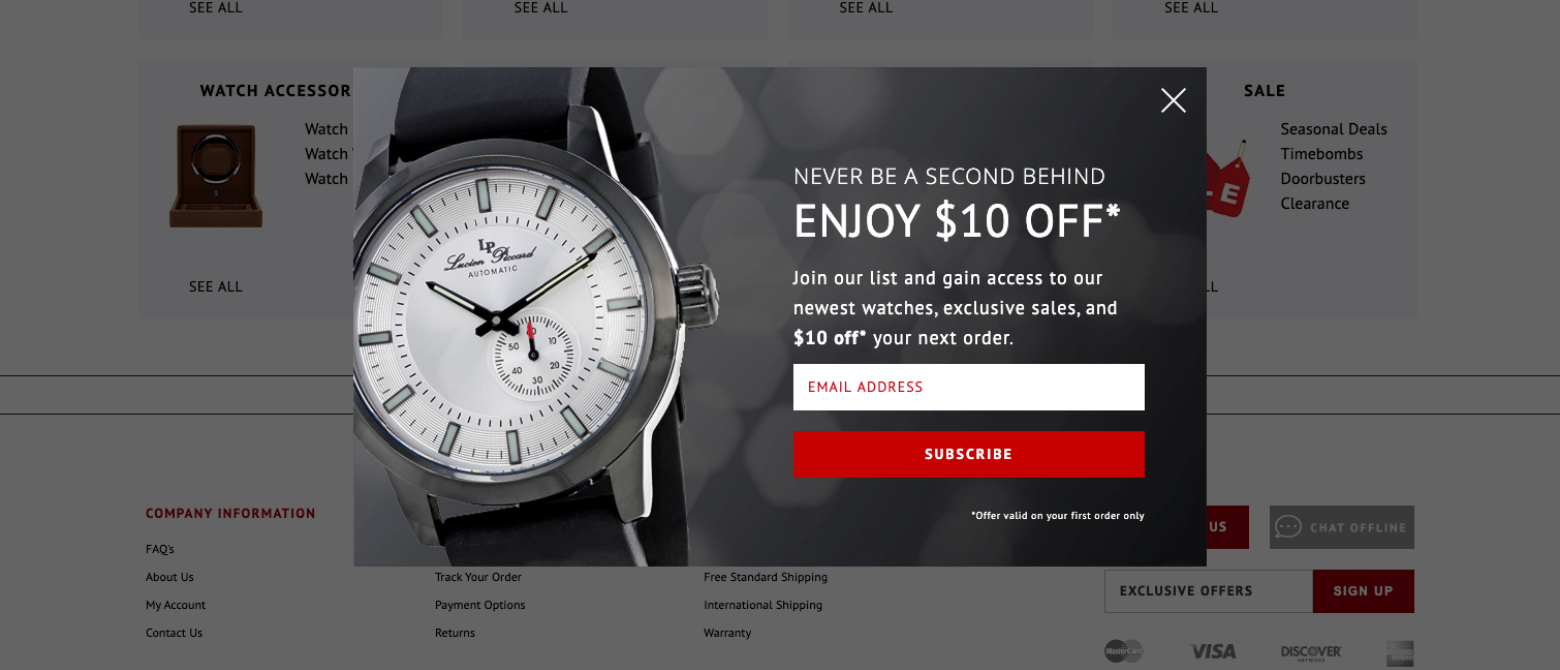
Combining the pop-up with a countdown timer adds urgency to the situation. Because this strategy present customers with something unexpected, it is best to use it for products that are often purchased on impulse.
Live events are a powerful form of content marketing because they can only be accessed at a particular time and place. Whilst that reduces the number of people you can reach, it creates a strong incentive for your leads to take action. Unless they make an effort to attend the event, they will miss out on unique information or ideas.

Live events help you start a “foot-in-the-door” strategy. By securing the minor commitment of attending a live event, you will be much better placed to ask for a bigger commitment later on. By asking your leads to book a space, you can collect their email address for subsequent campaigns.
You can create FOMO in a more organic way by building your marketing around specific events. That’s why calendars and launch schedules are so important. Events such as release dates, brand launches or discount sales, allow you to communicate genuine scarcity. Glastonbury Festival plans and executes a highly-effective FOMO marketing calendar every year. The marketing calendar incorporates expert PR and carefully-crafted sales strategies to ensure demand for tickets exceeds supply.

In his Oversubscribed, Daniel Priestley describes how to increase demand for your business and ensure that you never have more of something than you can sell. A FOMO marketing calendar built around staggered release dates increases your overall sales and adds value to your products.
Perhaps the most obvious way to leverage “Mere Urgency” is to make your deadlines as obvious as possible. A countdown timer can have a powerful effect on consumers, when it is combined with a special offer.

If your aim is to drive more sales as quickly as possible, a countdown timer will help to encourage impulse purchases. However, from a longer-term perspective, it may reduce the credibility of your brand.
Any challenger brand or start-up faces the same problem: how do you leverage scarcity and social influence when no-one knows who you are? This is a chicken-and-egg problem that marketers know all too well.
Whilst it may seem like FOMO doesn’t suit smaller businesses, there are things that make it ideal for upstart businesses.
- Every new milestone is a great chance to communicate your roadmap.
- The exclusivity of your offerings, and the scarcity of your products, is more plausible in the growth phase than it will be at any other time.
- Social groups identify more closely with smaller brands.
The most important thing is to plan your marketing schedule in advance, creating opportunities for FOMO marketing.
FOMO is caused by feelings of anxiety around the idea that an exciting experience or important opportunity is being missed or taken away. FOMO is generated by the amygdala — the part of the brain that detects whether or not something is a threat to survival. This part of the brain perceives the impression of being left out as a threat, creating stress and anxiety. A person will be more likely to experience FOMO if they are already highly sensitive to environmental threats. This includes people who struggle with social anxiety, obsessive or compulsive behaviors — including diagnosed obsessive-compulsive disorder — or have a form of emotional trauma in their past. Smartphones and social media have escalated the occurrence of FOMO by creating situations in which users are constantly comparing their lives to the idealized experiences they see posted online. apps and websites like Twitter, Facebook and Instagram make it easier than ever to see what other people are doing. The glamorized versions of their lives that are broadcast on features like Instagram stories or Facebook walls alters a user’s sense of what is normal and makes them think they are doing worse than their peers. People look outward at the experiences of others instead of inward at the great things in their lives. However, the anxiety and dissatisfaction created by FOMO can also lead people to desire connection and interaction or to increase their efforts to not miss out by checking different social media websites more. Either way, people are led back to social media and a harmful circle is created. Therefore, social media is both a cause and an effect of FOMO.FOMO marketing has emerged as a way to entice consumers to buy certain products or attend events. FOMO marketing triggers the customer’s fear of missing out in order to inspire them to take action. Some FOMO marketing strategies include:While FOMO marketing succeeds in getting people to buy more, it has a negative effect on consumers by triggering the depression and anxiety brought on by FOMO.
FAQs